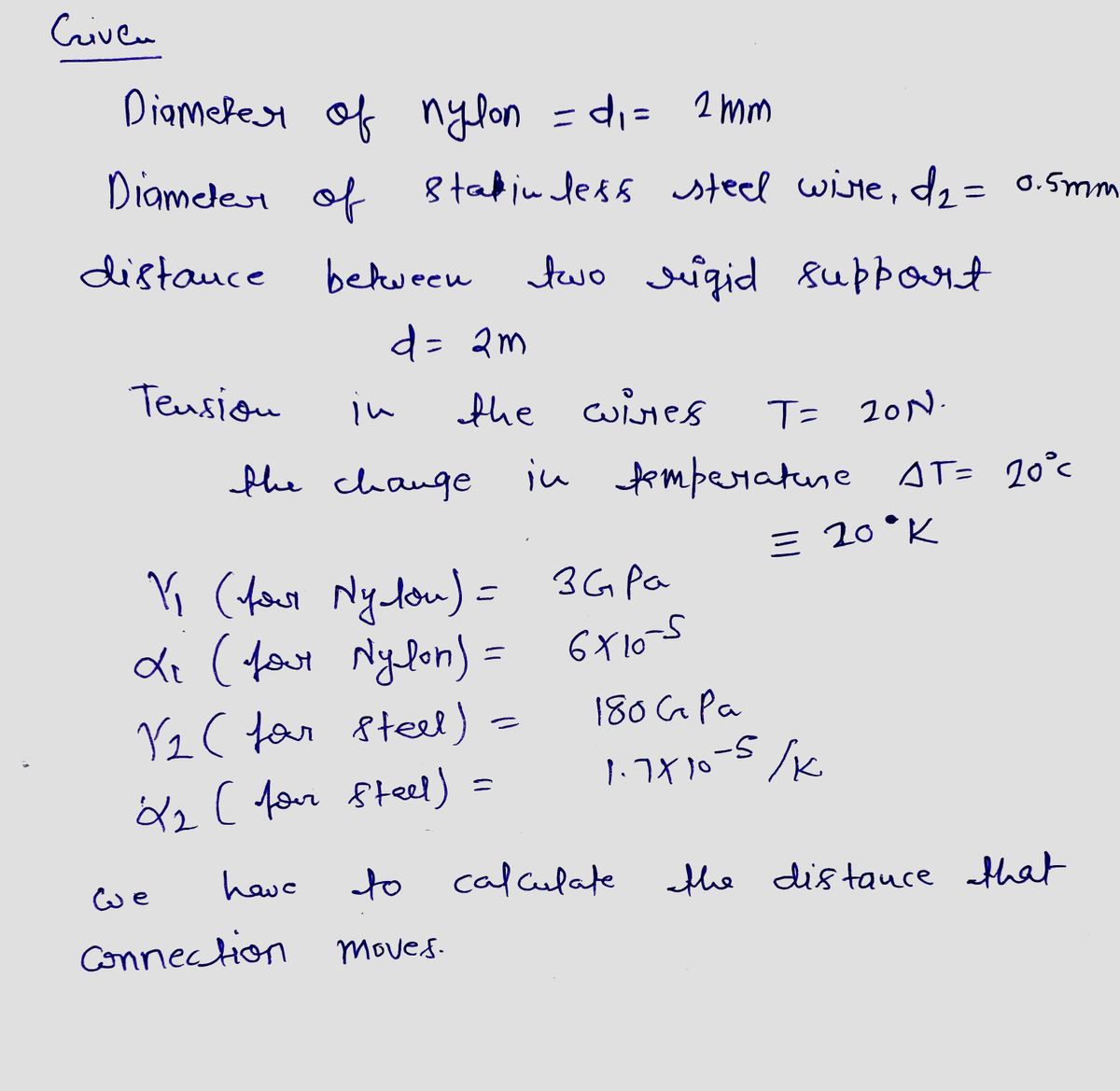1. A length of nylon fishing line of 2 mm diameter is tied to a length of 0.5 mm diameter stainless steel wire, then stretched between two rigid supports 2 m apart such that the tension in the wires is 20 N and the connection point between the two wires is exactly midway between the posts. The air temperature then goes down by 20°C. Find the distance that the connection moves. [Youngs modulus for nylon is 3 GPa, its thermal expansion coefficient is 6×10-5/K. Youngs modulus for stainless steel is 180 GPa, its thermal expansion coefficient is 1.7 x 10-5/K.]
1. A length of nylon fishing line of 2 mm diameter is tied to a length of 0.5 mm diameter stainless steel wire, then stretched between two rigid supports 2 m apart such that the tension in the wires is 20 N and the connection point between the two wires is exactly midway between the posts. The air temperature then goes down by 20°C. Find the distance that the connection moves. [Youngs modulus for nylon is 3 GPa, its thermal expansion coefficient is 6×10-5/K. Youngs modulus for stainless steel is 180 GPa, its thermal expansion coefficient is 1.7 x 10-5/K.]
Related questions
Question
![1. A length of nylon fishing line of 2 mm diameter is tied to a length of 0.5 mm diameter
stainless steel wire, then stretched between two rigid supports 2 m apart such that the
tension in the wires is 20 N and the connection point between the two wires is exactly
midway between the posts. The air temperature then goes down by 20°C. Find the
distance that the connection moves.
[Youngs modulus for nylon is 3 GPa, its thermal expansion coefficient is 6×10−5/K. Youngs
modulus for stainless steel is 180 GPa, its thermal expansion coefficient is 1.7 × 10−5/K.]](/v2/_next/image?url=https%3A%2F%2Fcontent.bartleby.com%2Fqna-images%2Fquestion%2F4ae89d13-3da3-4f42-8a30-4752fc9f6b5c%2F9da6545d-4bd9-4dca-8183-2fef93a700d5%2F1n7evz7_processed.jpeg&w=3840&q=75)
Transcribed Image Text:1. A length of nylon fishing line of 2 mm diameter is tied to a length of 0.5 mm diameter
stainless steel wire, then stretched between two rigid supports 2 m apart such that the
tension in the wires is 20 N and the connection point between the two wires is exactly
midway between the posts. The air temperature then goes down by 20°C. Find the
distance that the connection moves.
[Youngs modulus for nylon is 3 GPa, its thermal expansion coefficient is 6×10−5/K. Youngs
modulus for stainless steel is 180 GPa, its thermal expansion coefficient is 1.7 × 10−5/K.]
Expert Solution
Step 1

Step by step
Solved in 3 steps with 3 images
